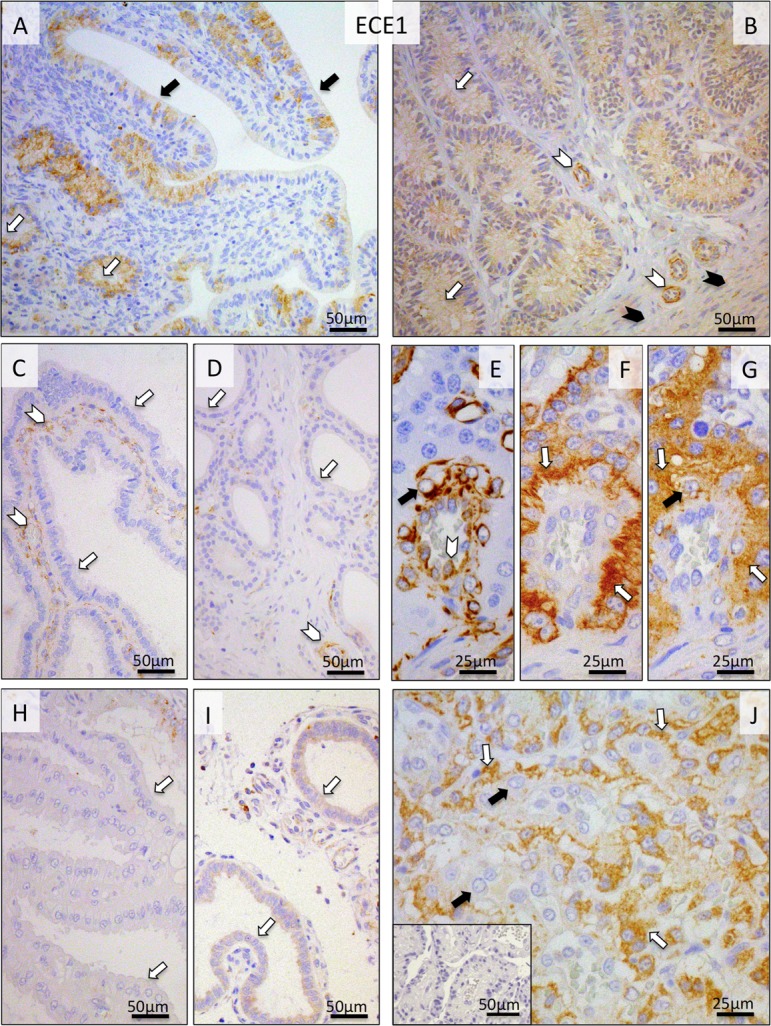Fig. 4.

Immunohistochemical (IHC) localization of ECE1 in the canine uterus and utero-placental (Ut-Pl) compartments at selected time points during pregnancy and at prepartum luteolysis; at the pre-implantation stage (A and B), in the Ut-Pl units during mid-gestation (C, D and G), and in the Ut-Pl compartments at prepartum luteolysis (H, I, J). (A, B) At pre-implantation, signals are predominantly localized to the endometrial luminal (surface) epithelial cells (solid arrows in A), glandular epithelial cells of the superficial and deep uterine glands (open arrows in A and B), in media of the vessels (open arrowheads in B) and myocytes (solid arrowheads in B). During mid-gestation and at prepartum luteolysis, within the Ut-Pl units, endometrial expression of ECE1 appears weaker and is detected in tunica media of the vessels (open arrowheads in C and D), the superficial glands (so-called glandular chambers) and deep uterine glands (open arrows in C, H, and D, I, respectively). In the placental labyrinth during mid-gestation, signals are localized in fetal trophoblast cells (i.e., syncytio- and cytotrophoblast) (open arrows in G). In order to distinguish between fetal and maternal cell types within the canine placenta, i.e., endothelial, trophoblast and decidual cells, (pan) CYTOKERATIN (wide spectrum) and VIMENTIN staining was applied to consecutive sections following those used for ECE1. Trophoblast cells stain positively for CYTOKERATIN (open arrows in F), whereas endothelial cells (open arrowhead in E) and decidual cells (solid arrow in E) stain positively for VIMENTIN. At prepartum luteolysis, fetal cytotrophoblasts stain strongly (open arrows in J) for ECE1. No or only weak signals can be seen in maternal decidual cells (solid arrows in G and J). There is no background staining in the isotype control (inserted in J).
